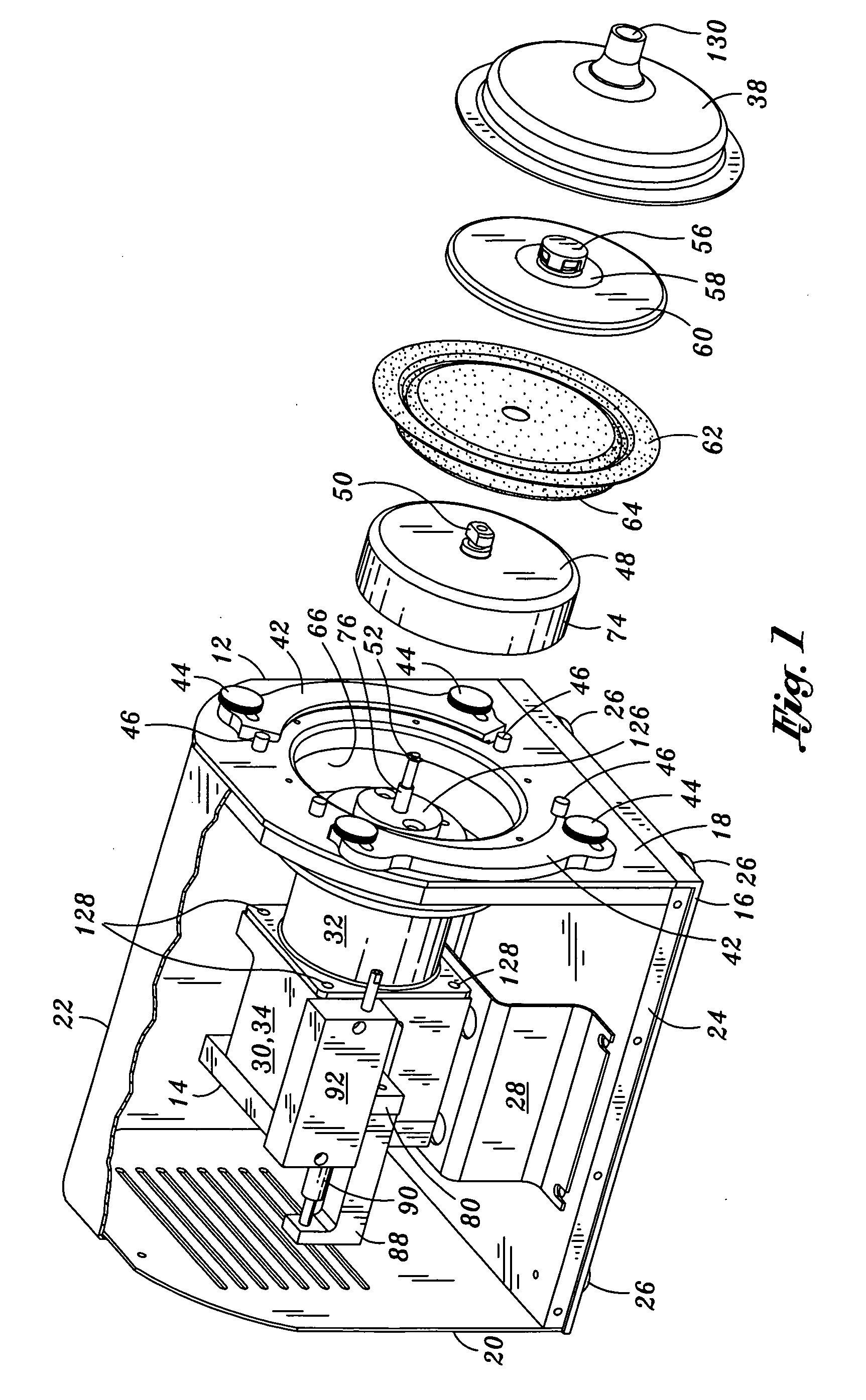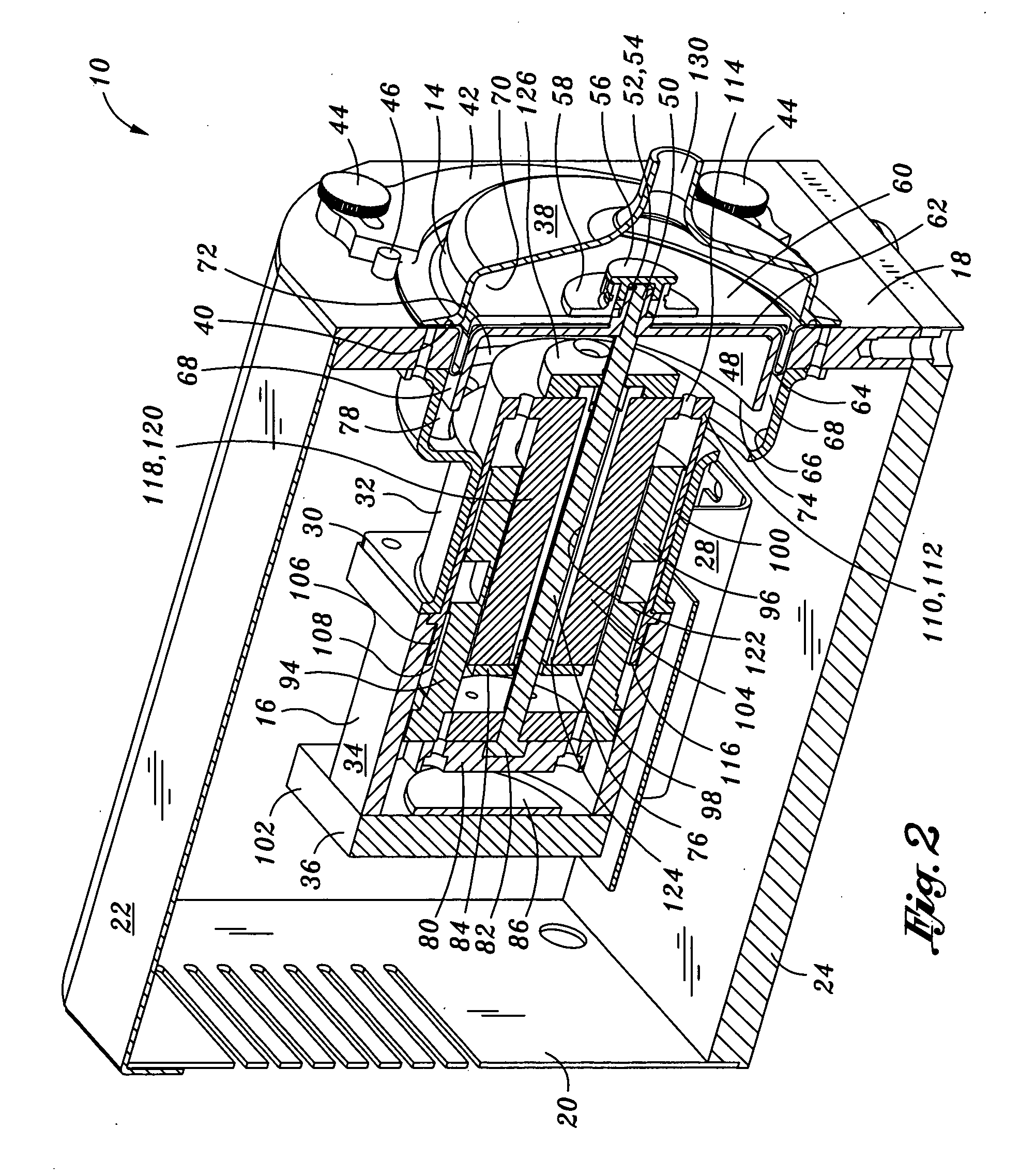High frequency oscillator ventilator
a high frequency oscillator and ventilator technology, which is applied in the field of medical equipment, can solve the problems of affecting the overall utility of the hfov, the inability of the patient's lungs to provide adequate ventilation or gas exchange, and the prior art's several deficiencies that detract from the overall utility, so as to reduce the noise produced by the hfov of the present invention, eliminate the slapping sound, and reduce the power consumption of the hfo
- Summary
- Abstract
- Description
- Claims
- Application Information
AI Technical Summary
Benefits of technology
Problems solved by technology
Method used
Image
Examples
Embodiment Construction
[0025] The present invention will now be described in particular with reference to the accompanying drawings wherein FIGS. 1-3 illustrate a high frequency oscillating ventilator (HFOV) 10 which, in its broadest sense, comprises a housing assembly 30 having an actuator assembly 102 mounted thereupon. The actuator assembly 102 is comprised of a linear actuator 104 and a linear coil 94 having a pushrod 76 which supports the linear coil 94 on the linear actuator 104. The pushrod 76 is axially slideable within the linear actuator 104 and is directly mounted to a diaphragm 62 which sealingly divides the housing assembly 30 into a first side 70 and a second side 72. The actuator assembly 102 is configured to effectuate reciprocation of the piston 48 and diaphragm 62 in a manner to alternately produce positive and negative pressure waves in gas provided to a patient's airway.
[0026] The actuator assembly 102 may be configured as a linear motor which is similar to the type shown and describe...
PUM
 Login to View More
Login to View More Abstract
Description
Claims
Application Information
 Login to View More
Login to View More - R&D
- Intellectual Property
- Life Sciences
- Materials
- Tech Scout
- Unparalleled Data Quality
- Higher Quality Content
- 60% Fewer Hallucinations
Browse by: Latest US Patents, China's latest patents, Technical Efficacy Thesaurus, Application Domain, Technology Topic, Popular Technical Reports.
© 2025 PatSnap. All rights reserved.Legal|Privacy policy|Modern Slavery Act Transparency Statement|Sitemap|About US| Contact US: help@patsnap.com



